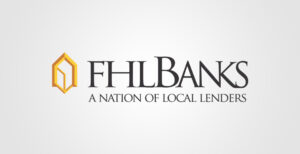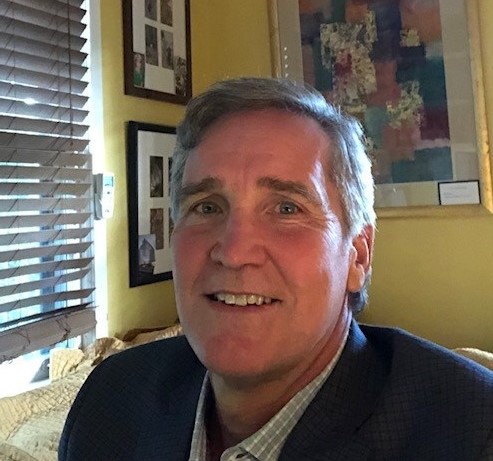Very few insurance companies showed up this month to talk about the future of the much-debated, 90-year-old Federal Home Loan Bank System, despite the fact that the system lends heavily to many large insurers at low interest rates, for a number of reasons.
Of the 85 people who spoke at sessions held by the system’s overseer, the Federal Housing Finance Agency, the vast majority were from small community banks, American Banker magazine reported. An official with just one insurance company, Mutual of Omaha, which is heavily invested in mortgage-backed securities, talked about the need to keep the lending practices in place, to help provide liquidity to the home loan market during good times and bad.

“Our experience as members of the Federal Home Loan Bank of Topeka points directly to how insurance company membership is critical to the overall mission of ensuring a competitive, liquid, efficient and resilient housing finance market,” said Ryan Comins, senior vice president at Mutual of Omaha, according to recording of the listening session.
He noted that Mutual of Omaha companies own some $7 billion in home loans and mortgage-backed securities. But income from premiums on life insurance policies don’t always match the timing of stresses in the market, he said. The FHLB membership allows non-banks to continue lending when others may not.
“We have found that in many cases, insurance companies are the only ones providing reliable liquidity during these periods of market stress, and the Federal Home Loan Bank system plays a critical role,” Comins said.
Without the FHLB liquidity, which proved crucial during the economic slowdown of the COVID-19 pandemic, mortgages would become more expensive for average Americans, he added.
Other insurers have had little to say about the Home Loan Banks in recent years, even though they have become some of the biggest borrowers. The FHLB System has reported that more than 500 U.S. insurance companies participate in the program, a number that has doubled in the last decade. And the system provides members with loans at favorable rates – just as interest rates otherwise have soared thanks to the Federal Reserve’s efforts to slow inflation this year.
 Bills designed to make borrowing even more favorable for insurers were introduced in several states early this year, but they saw little discussion from carriers and passed in only one state. Kentucky’s House Bill 171 gives the Home Loan Banks first priority on collateral pledged by member insurers. That means that the FHLB will no longer have to charge a premium on loans, saving carriers significantly on up-front fees. Nationwide, 21 other states have adopted similar measures in recent years.
Bills designed to make borrowing even more favorable for insurers were introduced in several states early this year, but they saw little discussion from carriers and passed in only one state. Kentucky’s House Bill 171 gives the Home Loan Banks first priority on collateral pledged by member insurers. That means that the FHLB will no longer have to charge a premium on loans, saving carriers significantly on up-front fees. Nationwide, 21 other states have adopted similar measures in recent years.
Lending to insurers has climbed steadily since 2008 but actually decreased by about $14 billion in 2021, the FHLB has reported. But that could change as the Fed’s prime rate continues to climb.
The future of the Home Loan Bank system, with 11 banks around the country, is now in question. Critics have charged that the system has lost its relevance and now serve mainly to benefit banks, who may utilize the low rates instead of inviting deposits from the local community. The system should also be expanding to more insurers and to other types of fintech companies that provide mortgages, some have said.
Others have questioned if the FHL banks are too focused on providing low-cost funding to some large institutions, which already have access to capital markets, American Banker noted. Major U.S. banks and insurance companies, such as MetLife, were among the top users of FHLB funding last year, and accounted for more than 70% of advances at five of the 11 Home Loan Banks, according to the system’s financial reports, American Banker reported.
“While smaller banks have been defending the system as it is, it is larger banks, nonbanks and insurance companies that are actually the primary beneficiaries — a significant blind spot in the FHFA’s listening session inquiry,” the magazine noted.
The FHLB system was created in 1932 to support community banks and mortgage lending at a time of widespread bank failures. But the majority of mortgages now come from non-banks.
The new director of the Federal Housing Finance Administration, Sandra Thompson, has pledged to explore major reforms to the bank system, and launched the listening sessions as a part of the first extensive review of the system in almost a century.
Was this article valuable?
Here are more articles you may enjoy.


 Man Sentenced for Flashing Three Insurance Agencies in Georgia
Man Sentenced for Flashing Three Insurance Agencies in Georgia  Truckers Who Fail English Tests Are Pulled Off Roads in Crackdown
Truckers Who Fail English Tests Are Pulled Off Roads in Crackdown  What to Expect in 2026: US P/C Results More Like 2024
What to Expect in 2026: US P/C Results More Like 2024  Apollo Sees Echoes of Collapse of SVB in US Insurance’s Shift to Caymans
Apollo Sees Echoes of Collapse of SVB in US Insurance’s Shift to Caymans 


